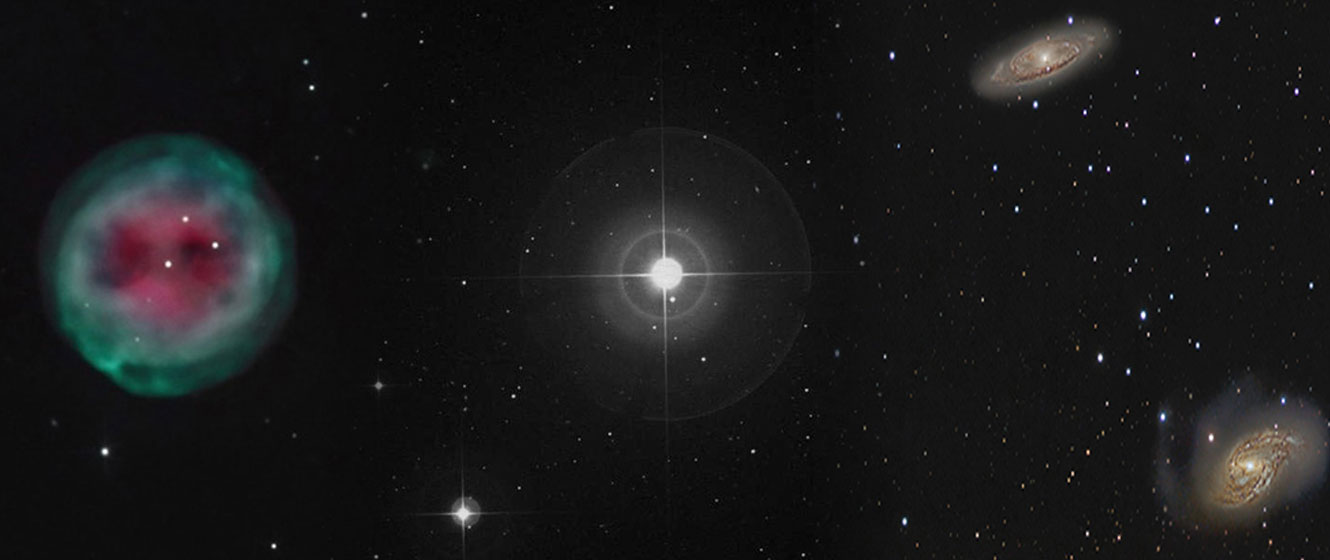
Every star you can see in the night sky belongs to our own Milky Way galaxy. There isn’t a single one that lies beyond it. However, spring provides you with your best chance to see the light of stars from distant galaxies far, far away. There are more galaxies visible now than at any other time of the year - but those are not the only treats the season has to offer!
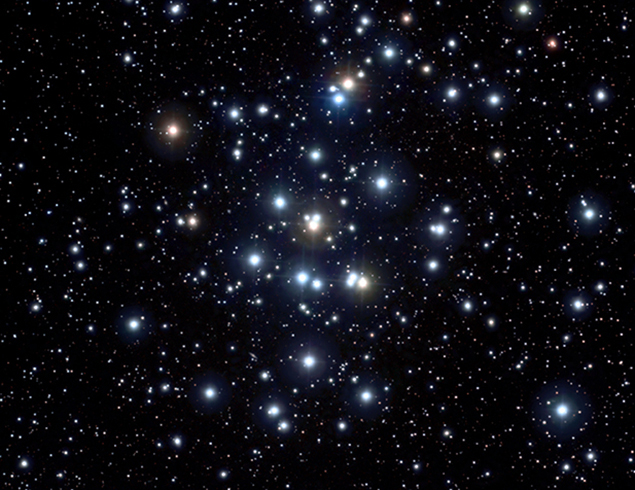
Image credit: Giuseppe Donatiello
M44, a Springtime Beehive
Before we venture out into intergalactic space, let’s visit a star cluster that sits on the border between winter and spring. M44, the Praesepe or Beehive cluster, has been known since antiquity and is visible to the naked eye under clear, dark skies. Unusually, its magnitude (3.9) is greater than almost all of the stars within the constellation that hosts it (in this case, Cancer, the Crab).
While not quite on a par with the Pleiades, it’s a fine sight in binoculars and through very low powered eyepieces. In fact, you may be better off with binoculars, as the cluster is large and may not fit within the telescopic field of view. Many of the stars are blue-white and relatively young (roughly 600 million years) but there are a number of older, orange stars embedded among them.
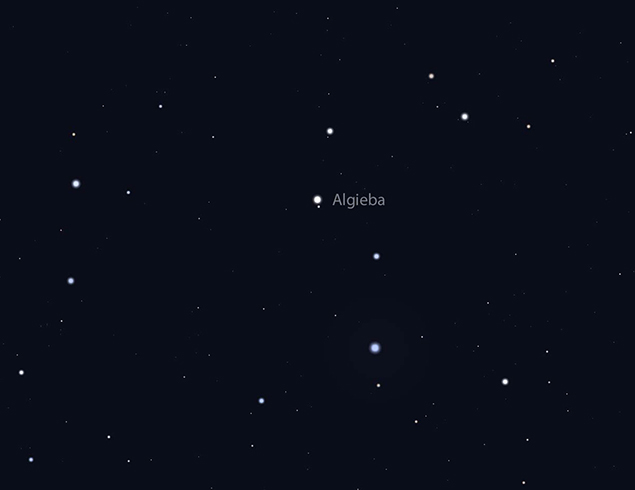
Image credit: Glenn Chaple
Algieba, the Golden Mane of the Lion
Having spied the Praesepe, let’s move on to neighboring Leo, the Lion, toward the east. Unlike Cancer, Leo is a prominent constellation, dominated by its brightest star, Regulus. While not our next target, it lies at the bottom of a backwards question-mark that outlines the lion’s head. Up toward his mane we find Gamma Leonis, aka Algieba, a beautiful multiple star for both binoculars and telescopes.
Even with low powered binoculars (or possibly excellent eyesight) you’ll see a bright, golden star with a blue-white companion that appears about twice as faint. However, point your telescope toward it and the bright primary star can be split in half. You’ll probably need a magnification of at least 75x, but you’ll get a better view if you can double that.
It’s a relatively close pair of stars of almost equal brightness. The slightly brighter of the two appears golden while its fainter companion has a little less color, but also typically shines with a golden-white light.
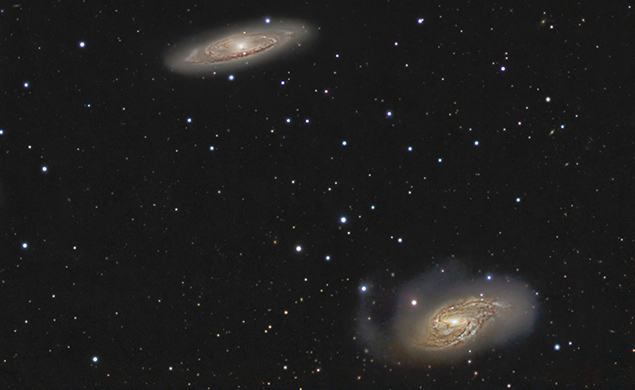
Image credit: Peter Goodhew
M65 and M66 - Two Close Galaxies
So now, having spent some time studying the stars within our own galaxy, it’s time to look further afield. Leo is home to a number of galaxies, but we can get two for the price of one in the form of the M65 and M66 pair.
Both were discovered by the French astronomer Charles Messier on March 1st, 1780, and included in his catalog of deep sky objects (hence the ‘M’.) They’re nearly identical in brightness and size and may be glimpsed with binoculars under clear dark skies. Realistically, as with almost all galaxies, your best bet is to use a telescope.
A low magnification of less than 60x is required to fit them both within the same field of view. You should see two faint, misty oval patches; of the two, M66 is slightly brighter and more oval, whereas M65 may appear more elongated and spindle shaped.
Look carefully to the north, and you could see a third galaxy: NGC 3628 is roughly the same brightness and is elongated like M65, but its light is spread out over a greater area, making it trickier to spot.
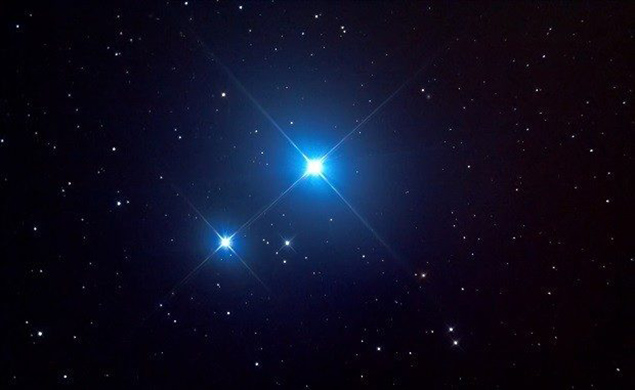
Image credit: Gary Fildes
Mizar and Alcor, Everyone’s Favorite Eyesight Test
If these galaxies elude you, let’s return to our own galaxy and a far easier sight that almost anyone can spot - even without binoculars or a telescope. Many people are familiar with the seven stars of the Big Dipper. However, few non-astronomers know of the multiple star that’s hidden in plain sight within it.
Mizar is the middle star in the dipper’s handle, and if you look carefully you may notice a tiny star beside it. Known as Alcor, this pairing is even visible to the naked eye under suburban skies and is a pretty sight in binoculars.
However, a telescope and a low magnification of only 25x is all you’ll need to split Mizar in two. The brighter, primary star shines with a brilliant, white light, while its companion appears about twice as faint and slightly bluish. You can comfortably crank the magnification up to 100x or more and still keep Mizar and its companion, as well as Alcor, within the same field of view.
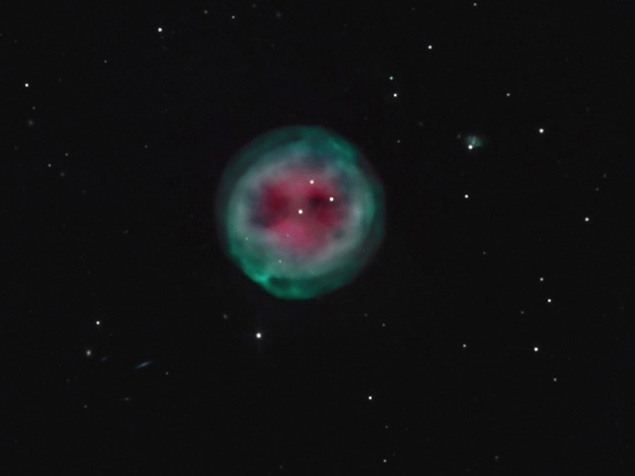
Image credit: Keith Quattrocchi
The Owl Within the Bear
The Big Dipper forms a part of Ursa Major, the Great Bear, and this much larger constellation is home to a number of other deep sky sights. Before returning to the realm of the galaxies, let’s take a look at M97, the Owl Nebula. Like the bird it’s named for, this isn’t necessarily an easy sight to see.
Found close to Beta Ursae Majoris (Merak), it’s quite faint and just beyond the reach of most binoculars. You’ll probably also be out of luck if you’re observing with a small telescope under suburban skies, but if you possess the skies and the equipment, you could get lucky.
You won’t need much magnification - it appears as a dark grey circular patch at only 35x, but you’ll probably need a medium sized scope and dark skies to see its elusive eyes. These appear as two large, oval patches in the circle but can definitely prove to be challenging. Using a light pollution reduction filter or an OIII filter could help.
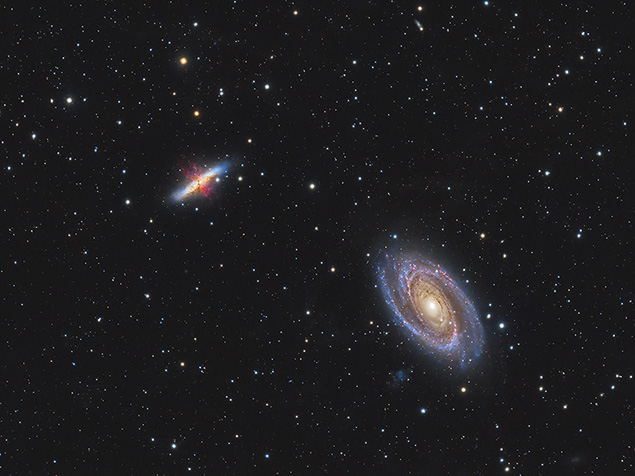
Image credit: Andrei Bacila
M81 and M82 - Spring’s Other Galaxy Pair
Like Leo, Ursa Major also holds a pair of galaxies close to its chest. By drawing a line northeast through Phecda and Dubhe, we come to the galactic odd couple of M81 and M82. This mismatched pair may be seen in binoculars under moderately dark skies, but you’re best advised to wait until the constellation is high overhead.
Telescopically, you can fit them both within the same field of view if you keep the magnification to below 50x. M81, a spiral galaxy, is the brighter and larger of the pair. You’ll see it as a small oval with a bright central core.
Toward the north, you’ll see a fainter, narrow streak. That’s M82, a starburst galaxy - so-called because close encounters with M81 have caused the formation of large numbers of new stars over the last few hundred million years.
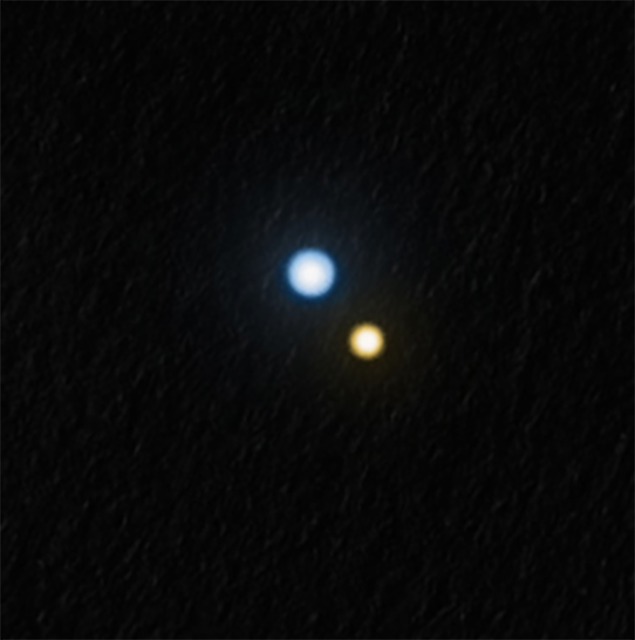
Image credit: Jeremy Perez
The Heart of the King
Let’s now look to the south of the Big Dipper, a little way below Alkaid, the star that marks the end of the dipper’s handle. Here you’ll find Cor Caroli, the brightest star in the constellation of Canes Venatici, the Hunting Dogs. It’s a small, inconspicuous constellation, but Cor Caroli is definitely worth a visit.
Its name means “Charles’s Heart” as, according to legend, the star brightened with the return of King Charles II to his native England. While there’s no astronomical records to support this, it’s another wonderful double star, but one for telescopes. A magnification of about 30x provides a fine view, with the primary star appearing white and about three times brighter than its pale gold companion.
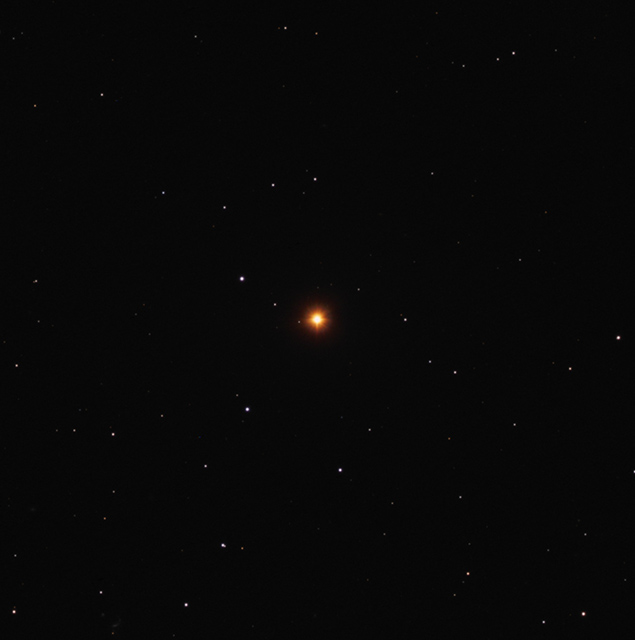
Image credit: David Ritter
A Superbly Red Star
Spring isn’t known for its variable stars, but there’s one within Canes Venatici that can be easily tracked with binoculars. Y Canum Venaticorum is a semi-regular variable that typically drops from magnitude 4.8 to 6.3 over a period of roughly 160 days, putting it well within the reach of binoculars.
However, there’s an added bonus with this star. Also known as La Superba, it’s one of the reddest stars known and has been variously described as deep orange and blood red. As with so many things in astronomy, it’s a subjective experience that impacts different observers in different ways. What color does it appear to you?
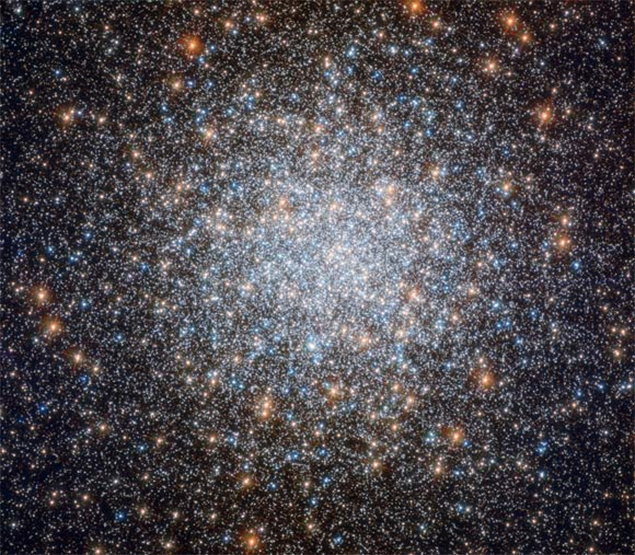
Image credit: NASA & ESA/Hubble, G. Piotto et al.
M3, a Globular Cluster at its Best
We’re nearly at the end of our list, but there’s another type of object we’ve had little experience with this season - globular clusters. Fortunately, Canes Venatici also holds an outstanding example for us, but we’ll need to wander some way to the east to find it.
M3 lies about midway between Cor Caroli and Arcturus, the brightest star in the constellation of Bootes, the Herdsman. It’s bright enough and large enough to be easily visible with binoculars, and is quite apparent through a telescope with low magnification. Even light pollution can’t smother this gem and you should be able to clearly see it in the center of a triangle of stars.
At about 35x, you’ll notice a slightly oval, misty grey patch with a bright core. Unlike the Praesepe, this is one cluster where increasing the magnification will definitely reap rewards. For example, upping the magnification to around 100x will allow you to resolve some of the component stars around the outskirts of the cluster.
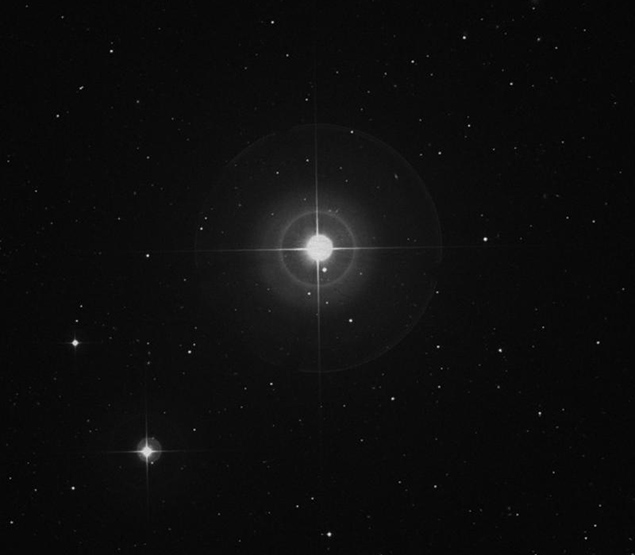
Image credit: Digitized Sky Survey 2
The Hidden Hair of a Queen
Last, but not least, we come to our final highlight for spring. Returning to Cor Caroli, we can draw a line between that star and Denebola, the star that marks the tail of Leo, the Lion. About midway again, we might glimpse the dim star Gamma Comae Berenices. This is one star in the faint constellation known as Coma Berenices, or Berenices’ Hair.
It’s an unusual name for a constellation. According to legend, Berenices was a Queen of Egypt who offered her hair to the gods in return for the safe return of her husband, Ptolemy. True to her word, once he returned safely from battle, she left her hair in a temple but the tresses were gone the next day. It was subsequently suggested that the goddess Aphrodite had placed the hair among the stars.
You can see her hair for yourself, but you’ll need to get away from any light pollution if you intend to try with just your eyes. Look just to the south of Gamma and you’ll see a relatively large scattering of faint stars, which is said to represent the hair itself. In reality, this is the Coma Star Cluster, a Y-shaped group of roughly 40 stars that’s best appreciated with binoculars.
At a distance of 280 light-years, this is one of the closest star clusters. In comparison, M44, the Praesepe (or Beehive cluster) is some 577 light-years away, while the Owl Nebula is over 2,000. All these objects lie within our own Milky Way galaxy, which spans about 100,000 light-years of space. M81 and M82 both lie roughly 12 million light-years away… but that’s nothing compared to the 40 million light-years between us and M65 and M66.
Click the arrow above to see MLA, APA, and Chicago Manual of Style citations.
MLA:
Bartlett, Richard. "Best Things to See in the Spring Sky," AstronomyHub, High Point Scientific, 26 Jul. 2023, https://www.highpointscientific.com/astronomy-hub/post/best-things-to-see-in-the-spring-sky.
APA:
Bartlett, R. (2023, July 26). Best things to see in the spring sky. High Point Scientific. https://www.highpointscientific.com/astronomy-hub/post/best-things-to-see-in-the-spring-sky
Chicago Manual of Style:
Bibliography:
Richard Bartlett. "Best Things to See in the Spring Sky," AstronomyHub (blog), High Point Scientific, July 26, 2023. https://www.highpointscientific.com/astronomy-hub/post/best-things-to-see-in-the-spring-sky.
Footnote:
Richard Bartlett, "Best Things to See in the Spring Sky," AstronomyHub, High Point Scientific, July 26, 2023, https://www.highpointscientific.com/astronomy-hub/post/best-things-to-see-in-the-spring-sky.
This Article was Originally Published on 04/27/2021










